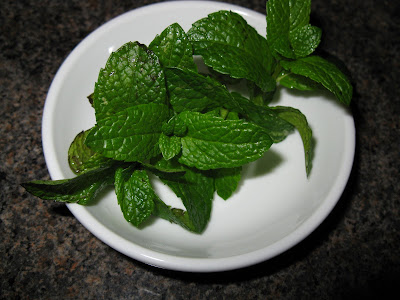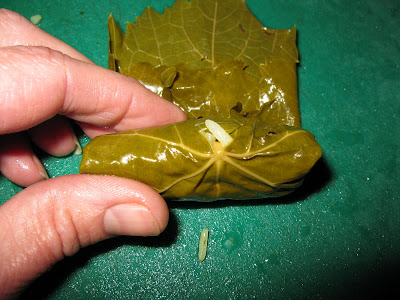
Sushi begins with rice, unlike sashimi, which is the Japanese style of presenting sliced raw fish on its own, or only with garnishes. The origins of sushi date back almost 1200 years, but sushi has only evolved to include rice since about 1700 AD.
 Once the rice is steamed, it is 'paddled' with special sushi vinegar, a sweet vinegar, which adds flavor to the rice, but also gives it a glossy texture.
Once the rice is steamed, it is 'paddled' with special sushi vinegar, a sweet vinegar, which adds flavor to the rice, but also gives it a glossy texture.- nori -the thin sheets of seaweed used to contain the rice and other ingredients
- wasabi - A hot paste of Japanese horseradish
- Cucumbers
- Avocados
- Soy sauce
- Miso - a fermented mix of soybeans, salt and vinegar (not pictured)
- Pickled ginger - a garnish and palate cleanser for the plate
The last two, the pickled ginger and soy, are generally served on the plate or as a side for dipping. Depending on how hot you like things, you can mix the wasabi and soy together to create your own personal dipping sauce!
and some cooked and butter-flied shrimps. Other seafoods commonly included in sushi are cod, snapper, eel, salmon roe, the list is endless... Need a party idea? What about a sushi party? Cook up a bunch of rice, assemble a variety of ingredients and let your guests assemble their own sushi!
If you are going to make your own sushi, go to your local fish monger or the fish counter at your grocery and tell them what you are doing (They won't laugh!) They will be able to recommend the freshest and best cuts of fish available.
 Now, most nori that you purchase is already toasted, but I like to toast mine a bit further. I find this helps the texture; otherwise it can be tough and hard to bite through.
Now, most nori that you purchase is already toasted, but I like to toast mine a bit further. I find this helps the texture; otherwise it can be tough and hard to bite through. It's easy and quick -- just quickly run the sheet of nori over a hot burner a few times; you will see and feel the texture change.
It's easy and quick -- just quickly run the sheet of nori over a hot burner a few times; you will see and feel the texture change.Our first roll will be a Maki-zushi, literally 'rolled sushi'. I have laid out the bamboo rolling mat, set down a sheet of nori and spread a thin layer of the seasoned rice over the nori covering all but the top inch or so. The rice can be quite sticky unless your hands are wet, so keep a bowl of water handy. Now, you can add as little (or none) or as much wasabi down the middle of the roll. I think I was a bit heavy handed here!
Now, we'll add some of our freshly sliced tuna (tekka) and deseeded cucumber strips.


Gently fold the mat and the nori away from you, using the mat to tightly 'snug' the roll together. Keep rolling, lifting the bamboo away as you go. When you get the the end, dampen the end edge of the nori with some water (just run you wet finger along the seam) and the roll will 'seal'.

Now, since we have used Tuna for our roll, we have created Tekka-maki!

One roll generally slices into 8 pieces. So, how does it look? Not bad for not having practiced very much!

I've decided to add cucumber, avocado and the cooked shrimp... That is part of the beauty of sushi! You can make up your own flavor combos!

Like before, we will gently fold the roll over, pulling away the plastic and the mat, but pulling them snugly into the roll to form the rigid shape.
All Gone!
So, are you a convert, or were you already a fan?
Dom Arigato!




























.JPG)




.JPG)




















